

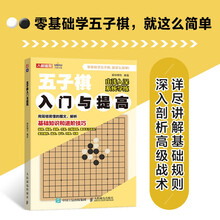




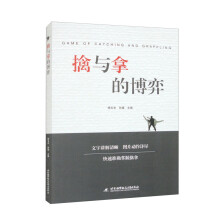
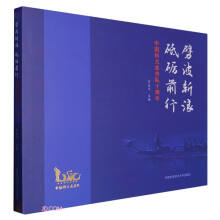
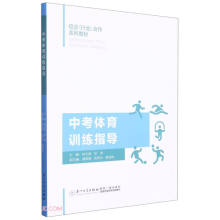
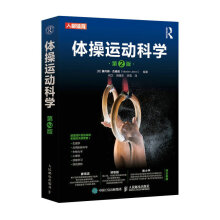
《体力活动研究方法》(第六版)通过系统地阐述研究过程,为读者提供了一套实用的方法学工具和参考,让你在完整地理解研究、制订研究计划、实施、评估及呈现研究结果方面不再焦虑和困惑。
《体力活动研究方法》(第六版)为人体运动科学、锻炼科学及物理治疗、康复、作业治疗等领域从事科学研究的学生呈现了研究过程的概览及目前常用的研究方法。加之其间不乏幽默的语言,使得这本书在国际范围内得到广泛认可。第六版还加强了以下方面内容:
● 在图书馆服务的利用方面进行了更新,包括有效利用电子资源进行检索方面进行了深入谈论;
● 在介绍统计学方法的部分,较少利用手工计算,而是以2008年赛季30名高尔夫运动员的数据分析为例,采用SPSS软件呈现基本统计程序和分析结果;
● 扩展和更新了一些章节内容,尤其是在目前取得较显著进展的质性研究部分,帮助研究者在选择研究方法、回答问题时不再仅仅以来传统的“科学”研究方法;
● 新增一章“混合方法研究”,即采用定性和定量研究相结合的模式解决科学问题;
● 增加了网络资源,教师可从人体运动出版社网站购买电子书、下载图片、测试题库、演示文稿等内容:
前言1 学习提示3 致谢4
第一部分研究过程概述
Overview of the Research Process
第一章体力活动研究概论
Introduction to Research in Physical Activity
第一节研究的本质
The Nature of Research
第二节解决问题的科学方法与非科学方法
Unscientific Versus Scientific Methods of Problem Solving
第三节几种研究模型
Alternative Models of Research
第四节研究的类型
Types of Research
第五节研究过程概述
Overview of the Research Process
第六节学术论文的构成部分:对应研究的步骤
Parts of a Thesis:A Reflection on the Steps in the Research Process
第二章问题的形成和文献的使用
Developing the Problem and Using the Literature
第一节确认研究问题
Identifying the Research Problem
第二节文献综述的目的
Purpose of the Literature Review
第三节文献检索的基本策略
Basic Literature Search Strategies
第四节文献检索的步骤
Steps in the Literature Search
第三章陈述问题
Presenting the Problem
第一节命定题目
Choosing the Title
第二节撰写引言
Writing the Introduction
第三节研究问题的陈述
Stating the Research Problem
第四节研究假设的提出
Presenting the Research Hypothesis
第五节明确操作定义
Operationally Defining Your Terms
第六节前提假设与研究局限
Basic Assumptions,Delimitations,and Limitations
第七节研究意义
Justifying the Significance of the Study
第八节学位论文和期刊论文的差别
Differences Between the Thesis and the Research Article
第四章制定研究方法
Formulating the Method
第一节如何呈现研究方法细节
How to Present Methodological Detail
第二节为什么计划研究方法如此重要
Why Planning the Method Is Important
第三节设计实验的两个原则
Two Principles for Planning Experiments
第四节描述研究对象
Describing Participants
第五节描述测试工具
Describing Instruments
第六节步骤的描述
Describing Procedures
第七节统计设计与统计分析
Describing Design and Analysis
第八节建立因果关系
Establishing Cause and Effect
第九节研究对象、测量和处理间的交互作用
Interaction of Participants,Measurements,and Treatments
第五章研究与学术中的伦理道德问题
Ethical Issues in Research and Scholarship
第一节学术不端行为的7个方面
Seven Areas of Scientific Dishonesty
第二节有关版权的道德问题
Ethical Issues Regarding Copyright
第三节学术不端行为模式
Mode for Considering Scientific Misconduct
第四节与同事合作
Working With Faculty
第五节保护研究对象
Protecting Human Participants
第六节保护动物研究对象
Protecting Animal Subjects
第二部分体力活动研究中的统计与测量
Statistical and Measurement concepts in Research
第六章熟悉统计概念
Becoming Acquainted With Statistical Concept
第一节为什么需要统计学
Why We need Statistic
第二节统计分析中计算机的应用
Use of Computers in Statistic Analysis
第三节统计描述和统计推断并不是指统计学方法
Description and Inference Are Not Statistic Techniques
第四节抽样方法
Ways to Select a Sample
第五节事后均衡性检验的解释
Justifying Post Hoc Explanations
第六节随机抽样和随机分组的困难:多好才算好呢
Difficulty of Random Sampling and Assignment:How Good Does It Have to Be?
第七节分析单位
Unit of Analysis
第八节测量集中趋势和变异性
Measures of Central Tendency and Variability
第九节统计方法的基本概念
Basic Concepts of Statistical Techniques
第十节后面统计方法中使用的数据
Data for Use in the Remaining Statistical Chapters
第七章研究设计和评价中的统计问题
Statistical Issue in Research Planning and Evaluation
第一节概率
Probability
第二节实际意义(效果量)
Meaningfulness(Effect Size)
第三节检验效能
Power
第四节使用专业背景的信息
Using Information in the Context of the Study
第八章变量间的相关
Relationships Among Variables
第一节相关性研究在研究什么
What Correlational Research Investigates
第二节理解相关的本质
Understanding the Nature of Correlation
第三节相关系数的意义
What the Coefficient of Correlation Means
第四节用相关进行预测
Using Correlation for Prediction
第五节偏相关
Partial Correlation
第六节简单相关的应用
Uses of Semipartial Correlation
第七节多元回归的过程
Procedures for Multiple Regression
第八节多元相关
Multivariate Forms of Correlation
第九章组间差异
Differences Among Groups
第一节统计学如何检验差异
How Statistics Test Differences
第二节t检验的类型
Types of t Tests
第三节t的解释
Interpreting t
第四节t和r的关系
Relationship of t and r
第五节方差分析
Analysis of Variance
第六节协方差分析
Analysis of Covariance
第七节实验误差率
Experimentwise Error Rate
第八节理解多变量分析技术
Understanding Multivariate Techniques
第十章非参数统计方法
Nonparametric Techniques
第一节卡方检验:检验实际观测值和期望值的差异
Chi Square:Testing the Observed Versus the Expected
第二节秩检验方法
Procedures for Rank-Order Data
第三节相关分析
Correlation
第四节组间差异性检验
Differences Among Groups
第十一章研究变量的测量
Measuring Research Variables
第一节效度
Validity
第二节可靠性
Reliability
第三节检验可靠性的方法
Methods of Establishing Reliability
第四节评价者间可靠性(客观性)
Intertester Reliability(Objectivity)
第五节测量的标准误
Standard Error of Measurement
第六节使用标准分比较运动成绩
Using Standard Scores to Compare Performance
第七节体力活动的测量
Measuring Movement
第八节纸笔测验
Measuring Writing Responses
第三部分研究类型
Types of Research
第十二章体力活动中的历史研究
Historical Research in Physical Activity
第一节研究范式
Research Paradigms
第二节研究和课题的路线
Lines of Inquiry and Topics
第三节研究设计
Designing the Research
第四节证据处理
Working With the Evidence
第十三章体力活动中的哲学研究
Philosophic Research in Physical Activity
第一节明确哲学研究目的
Identifying the Purposes of Philosophic Research
第二节确定研究问题
Locating A Research Problem
第三节分析研究问题
Analyzing A Research Problem
第十四章研究合成(META分析)
Research Synthesis(Meta-Analysis)
第一节系统综述中的Meta分析
Using Meta-Analysis to Synthesize Research
第二节呈现效果量的数据
Presenting Effect Size Data
第十五章调查研究
Surveys
第一节问卷调查法
Questionnaire
第二节电子调查
Electronic Surveys
第三节德尔菲法
Delphi Method
第四节个人访谈
Personal Interviews
第五节标准调查
Normative Survey
第十六章其它描述性研究方法
Other Descriptive Research Methods
第一节发育研究
Developmental Research
第二节案例研究
Case Studies
第三节工作分析
Job Analysis
第四节观察性研究
Observational Research
第五节非观察性研究技术
Unobtrusive Research Techniques
第六节相关性研究
Correlational Research
第十七章体力活动流行病学研究
Physical Activity Epidemiology Research
第一节观察性研究与实验性研究
Observational Versus Experimental Research
第二节什么是流行病学
What Is Epidemiology
第三节体力活动测量的定义
Physical Activity Measurement Definitions
第四节体力活动测评
Assessment of Physical Activity
第五节流行病学研究设计
Epidemiologic Study Designs
第六节阅读和理解体力活动流行病学研究
Reading and Interpreting a Physical Activity Epidemiologic Study
第十八章实验研究与准实验研究
Experimental and Quasi-Experimental Research
第一节影响研究效度的因素
Sources of Invalidity
第二节内部效度的影响因素
Threats to Internal Validity
第三节外部效度的影响因素
Threats to External Validity
第四节控制影响内部效度的因素
Controlling Threats to Internal Validity
第五节控制外部效度的影响因素
Controlling Threats to External Validity
第六节设计类型
Types of Designs
第十九章质性研究
Qualitative Research
第一节质性研究步骤
Procedures in Qualitative Research
第二节数据分析
Analysis of the Data
第三节结束语
Concluding Remarks
第二十章混合方法研究
Mixed-Methods Research
第一节定量和定性相结合的方法
Combining Quantitative and Qualitative Methods
第二节设计混合方法研究
Designing Mixed-Methods Research
第三节混合方法研究的注意事项
Specific Issues in Mixed-Methods Research
第四节混合方法研究的实例
Examples of Mixed-Methods Research
第四部分撰写研究报告
Writing the Research Report
第二十一章完成研究过程
Completing the Research Process
第一节研究申请书
Research Proposal
第二节写好前言
Developing a Good Introduction
第三节研究方法
Describing the Method
第四节申请流程
The Proposal Process
第五节定性研究申请书
Preparing and Presenting Qualitative Research Proposals
第六节基金申请标书
Writing Proposals for Granting Agencies
第七节提交内部资助申请书
Submitting Internal Proposals
第八节完成学位论文
Completing Your Thesis or Dissertation
第九节结果与讨论
Results and Discussion
第十节多实验结果的报告
Handing Multiple Experiments in a Single Report
第十一节统计表和统计图
Using Tables and Figures
第二十二章报告研究方法
Ways of Reporting Research
第一节基本写作指南
Basic Writing Guidelines
第二节致谢词简介
A Brief Word About Acknowledgments
第三节学术论文的格式:传统论文格式和期刊论文格式
Thesis and Dissertation Format:Traditional Versus Journal
第四节成功撰写期刊格式论文的几点提示
Helpful Hints for Successful Journal Writing
第五节修改研究论文
Revising Research Papers
第六节写作摘要
Writing Abstracts
第七节口头报告和墙报制作
Making Oral and Poster Presentations
附录(APPENDIX)
参考文献(References)